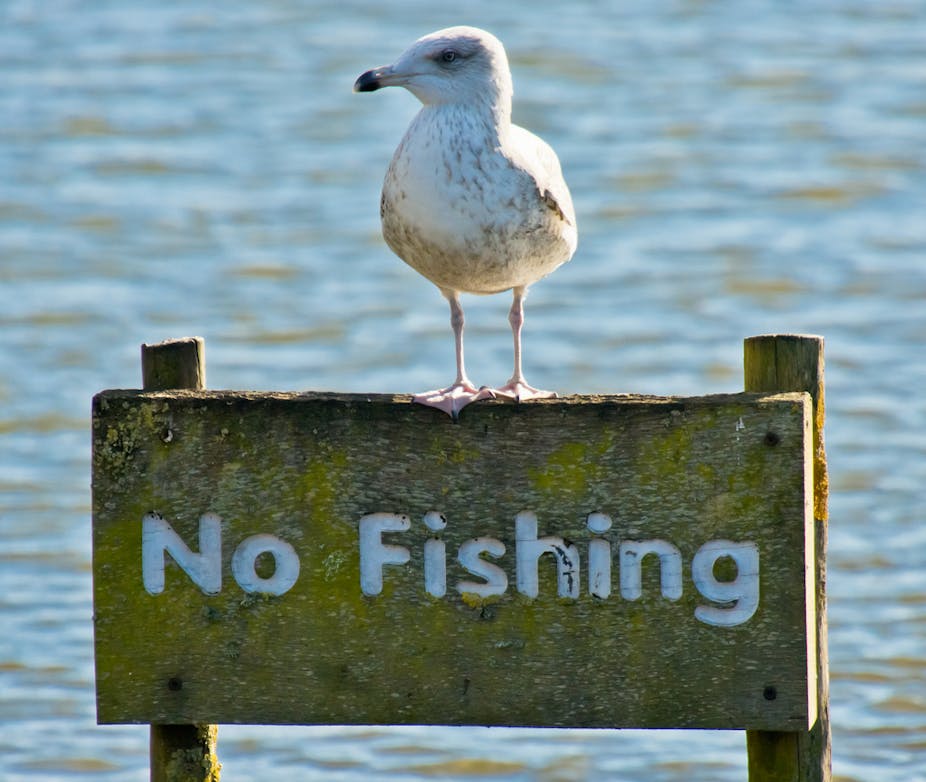Some of the world’s most vulnerable marine habitats are being failed by the conservation orders put in place to protect them. As the Environmental Audit Committee meets to discuss how it will implement Marine Conservation Zones in the UK, it’s worth paying heed to the latest research into the effectiveness of Marine Protected Areas around the world.
The concept of Marine Protected Areas (MPAs) as part of marine conservation policy has been gaining traction with governments worldwide. MPAs may be thought of as underwater national parks – areas granted protections intended to maintain certain features or habitats in the face of the ever-increasing impact of humans. That marine conservation is on the political agenda at all is real progress – until very recently the complex ecosystems under the waves were out of sight, out of mind.
In response to first the Convention on Biological Diversity of 1992 and subsequent legislation such as the European Marine Strategy Framework Directive, governments worldwide have been designating MPAs, with widely varying degrees of protection. An MPA can be anything from a no-take zone where all forms of fishing or disturbance are banned, to an area with a name (and often supporting legislation) but no effective protection at all – dubbed a “paper park”.
Surveying more than 2,000 species of reef fish inside and outside MPAs in 40 countries, an international team found in a study published this week that marine fish populations inside many parks or reserves are generally no different to those found in fished areas.
Five findings
Unsurprisingly the effects varied in different parts of the world, but some important themes emerged. The success of an MPA in meeting conservation goals depends on five key features, and ideally at least four of these five criteria should be met: the MPA should be no-take, the regulations well-enforced, it should be long-established, large in area, and isolated in terms of habitat (an island, or an area of coastal reef bounded by sandy beaches may be ideal).
Conversely, those that allow any form of fishing, are inadequately enforced or too small to encompass the natural range of the most vulnerable species, such as wide-ranging sharks, will fail to provide adequate protection.
Clearly, age is something that takes time, the implication being that MPAs should be permanently designated rather than subject to political whims. The reason for this is that species recovery can take time, and remember, we have intensely fished our coasts and territorial seas for many, many years. Implementing protection on ecological time scales allows MPAs to become effective laboratories for research. A long-term study recently showed that effective MPAs can help resist invasion from species who are moving due to the effects of climate change.
In the UK, 27 Marine Conservation Zones (MCZs) were designated in November 2013. This represents a fraction of the sites initially proposed, but these have been deferred pending the gathering of “further evidence”.
This is a wonderful obfuscation, as evidence for the effects of marine protection cannot be determined unless protection is implemented in the first place. Studies in no-take MPAs show that the time for fished species to respond to protection varies, and even taking out the effects of humans may have unexpected results as natural ecosystem processes return. Evidence from UK waters may be poor, but there is ample information available from the rest of the world to provide a guide for the best way to build a biologically functional MPA.
Measuring success
It’s not always clear what the goals of Britain’s protected zones are. This is not a trivial issue, because the objectives provide a framework for measuring the success or otherwise of protection measures. The UK’s Science Advisory Panel has struggled with vague definitions of objectives to “maintain” and “recover” marine habitats. A few zones do have more specific goals: at Lundy (a pre-existing no-take zone), the protection of rock lobster is explicitly stated by Ministerial Order. But are the zones boundaries set to encompass the range of lobster movement and thus allow numbers to build? Will fishing be eliminated?
Under the current framework, the way that MCZs are regulated is not explicitly stated anywhere. Areas endowed with maximum protection are called “reference areas”. On Natural England’s MCZ Factsheets, reference areas are not mentioned, permitted activities are licensed via the Marine Management Organisation, or are made on a “case-by case basis” by local authorities.
And so, this looks a lot less like a protected area, and a lot more like business as usual. The UK’s MCZ’s are not no-take (Lundy excepted), they are mostly not very large, and most fall on continuous habitat. The degree of enforcement remains to be seen, but if there are effectively no restrictions on current activities, what enforcement is required?
So is the current and proposed network of protected zones in the UK nothing but a series of paper parks? Some would say so. The challenge to conservation planners, in Britain and elsewhere, is to build a series of protected areas that fulfil the criteria for successful conservation. It would help to have clearly stated biological goals for these parks that would provide a basis for their location and design. But so far, the consultation process appears to try to please and provide for everybody – except the marine environment itself.

